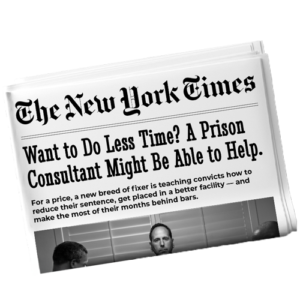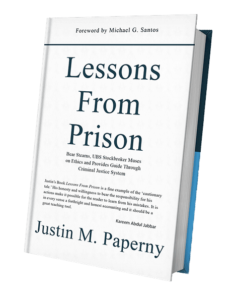Yesterday I had a tough call with a defendant. But if he was paying attention, he’s better off for it.
He kept saying his case was gray—that somehow it wasn’t clear-cut. That his conduct wasn’t fraud-fraud. Just a little misleading. Sort of in the middle. “Gray area,” he said, over and over.
Let me be blunt: if you broke the law, you don’t have the luxury of calling it gray: you broke the law. The second you start trying to downplay what happened, you’re moving further away from the one thing you actually want: the shortest sentence possible!
The “Gray Area” Myth That Kills Your Credibility
I get why people do i (I did it!, too). It’s easier on the conscience. You don’t want to feel like a bad person. You tell yourself, I didn’t mean to hurt anyone. It’s not like I was running a Ponzi scheme.
But here’s the problem: if you can’t admit, clearly and without spin, that what you did was wrong, then how are you going to tell your story to your lawyer? Or the probation officer? Or, most importantly, the judge?
They’ve seen the real gray cases. They’ve seen the black and white ones too. Yours probably isn’t that gray. Let me say it again: if you plead guilty, it is not gray.
Let’s address it again. If you’re dancing around the facts—”kind of,” “maybe,” “not entirely”—you’re not telling the truth. You’re managing optics. And that shows up in your pre-sentence interview. It shows up in your lawyer’s sentencing memo. And it absolutely shows up in court.
You Want Leniency? Then Say What Happened
On that same call, the defendant told me, “I need to show I’m completely different than the government’s version of events.”
No. If you’ve already pleaded guilty—or you’re going to—then some of the government’s version is correct.
You did engage in fraud. You did mislead investors, customers, or whoever was on the other side of your scheme. And yes, there were real consequences for investors turned victims. For some, they were life-changing. Do you disagree with that?
If you’re serious about leniency, you have to lead with truth. Not PR. Not selective memory. Not cherry-picked context.
And then, yes—once you’ve owned your role—then you can talk about the nuances. What pressures you were under. How it happened. What you’ve done since. Who you’ve tried to help. That’s the stuff that can move the judge.
But if your foundation is shaky, nothing else matters.
Real Consequences for Soft Denial
Let me give you an example.
We had a client two years ago—smart guy, tech background, ran a start-up. He fought the “gray area” battle all the way to sentencing. Never fully owned it. Kept hedging. His lawyer submitted a decent memo, but you could feel the gaps. The remorse didn’t land.
He got 37 months. We both knew he could’ve had less if he’d stopped minimizing the damage and just told the truth.
Contrast that with someone we guided last year—very similar case, almost the same conduct. But this person got it early. Took full responsibility. No gray area games. We built a narrative based on facts, consequences, and remorse without excuses. He got 18 months.
Same system. Same judge. Different result.
Your Story Needs the Right Message
A lot of defendants want to create something on their own—a personal narrative, a video, a letter. I encourage that. But it only works if the message is right.
Here’s the formula:
Acknowledge what you did → Explain how it happened → Own the consequences → Show what you’re doing differently.
If you skip that first part—if you’re still in the “sort of gray” mindset—then nothing else you say matters. Because you’re still playing the victim, or worse, still trying to justify fraud.
Judges aren’t looking for perfection. They’re looking for truth. Accountability. Consistency. You can’t fake that.
Stop Arguing with the Facts. Start Building The Right Way
I know this is hard. I know there’s shame, fear, and embarrassment. But you don’t fix any of that by pretending it wasn’t that bad or staying in the shadows.
This isn’t just about what you say—it’s about what you believe. Because the people reading your PSR, watching your sentencing video, and hearing your words in court? They’ve seen hundreds of cases. They know when you’re spinning.
Drop the spin.
If you want to build trust, start by telling the truth.
Justin Paperny
P.S. If this makes sense, join our team this Monday at 1 p.m. Pacific, 4 p.m. Eastern. We host a free webinar to answer questions, share lessons from real cases, and help you avoid the most costly mistakes people make during a government investigation. Bring questions. Come ready to learn.




